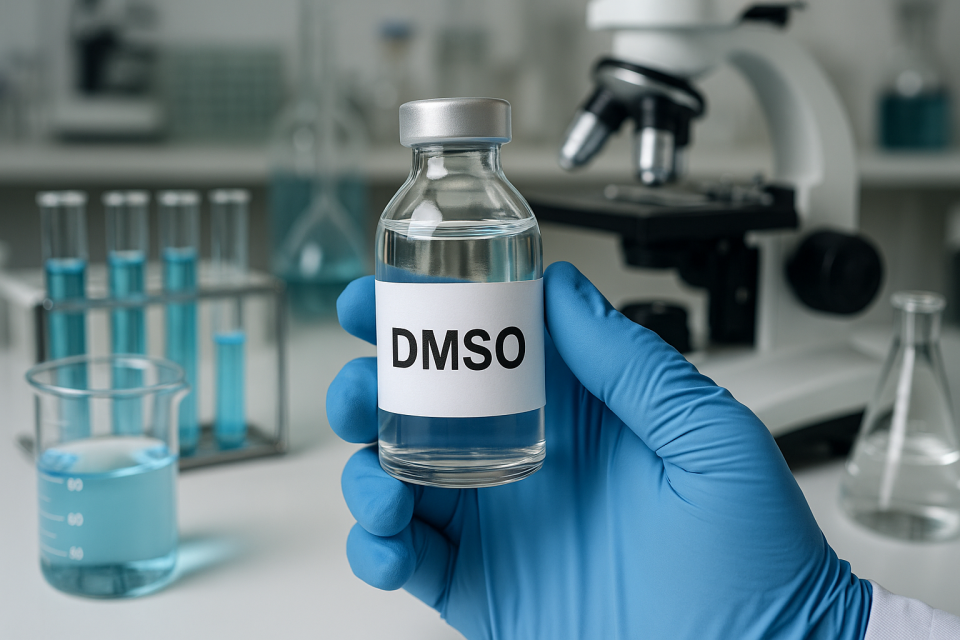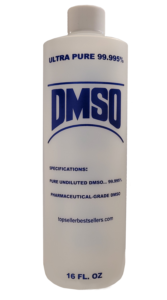Dimethyl sulfoxide, better known as DMSO, may be one of the most misunderstood and underutilized compounds in modern medicine. Initially derived from wood pulp during paper manufacturing, DMSO has gained increasing recognition for its extraordinary ability to penetrate human tissues and transport other substances directly into cells. But beyond its unique chemical properties lies a vast body of scientific and clinical evidence demonstrating its profound healing potential, from pain relief and anti-inflammatory action to nerve regeneration and even organ repair.
Medical Applications and Consistent Success Rates
Across a wide spectrum of diseases and injuries, DMSO has consistently demonstrated success rates between 80% and 90%. These results have been observed in both emergency and chronic care scenarios:
- Stroke: Time is critical when treating strokes, and studies have shown that DMSO administered intravenously within hours can dramatically reduce damage and help patients regain lost motor or cognitive function.
- Spinal Cord Injuries: Case reports document previously paralyzed individuals experiencing partial or full recovery of mobility following prompt DMSO treatment, something once thought impossible.
- Autoimmune Disorders and Arthritis: DMSO’s anti-inflammatory properties have made it a powerful tool in managing autoimmune conditions, where it can help calm flare-ups and reduce pain. In cases of osteoarthritis and rheumatoid arthritis, patients often report increased joint mobility and pain reduction without the side effects of NSAIDs or steroids.
- Burn Injuries: DMSO helps preserve tissue integrity, reduce scarring, and speed up healing by increasing circulation and oxygenation in damaged tissues.
- Scleroderma and Down Syndrome: Despite being classified as “incurable,” both conditions have shown unexpected improvements when DMSO was introduced as part of a holistic treatment plan. Children with Down Syndrome have achieved developmental milestones previously considered beyond reach.
These outcomes have been replicated across thousands of patients and multiple clinical settings, providing a level of reproducibility rarely seen in experimental therapies.
Clinical Research and Scientific Documentation
By 1991, the medical literature had already documented more than 3,000 clinical studies involving over 500,000 patients worldwide. These investigations consistently supported DMSO’s safety and therapeutic value, particularly in:
- Inflammatory conditions
- Neurological disorders
- Acute injuries and trauma
- Pain management
International medical symposiums throughout the 1970s and 1980s compiled and disseminated these findings, featuring presentations from university hospitals, military research facilities, and independent clinical practitioners.
One striking example comes from a study involving 42 patients who had suffered cardiac arrest and were later revived. These patients developed post-resuscitation sepsis, a condition that is frequently fatal, especially when the bacteria involved are resistant to antibiotics. However, DMSO administered intravenously demonstrated a marked ability to control sepsis and significantly improve survival rates, even when antibiotics failed.
DMSO’s Role in Regenerative Medicine
DMSO’s regenerative potential extends into the frontier of stem cell therapy. Research has shown that when combined with other agents, DMSO can help induce stem cells to differentiate into heart cells, offering hope to those with cardiac damage. This could revolutionize how we treat heart failure and tissue damage following myocardial infarctions.
In addition, DMSO’s membrane-penetrating properties make it an ideal vehicle for transporting stem cells and other regenerative compounds to their target tissues, a promising development in organ repair, joint regeneration, and nerve restoration.
Diabetes and Kidney Stones
Emerging anecdotal and clinical reports also point to DMSO’s role in metabolic and renal health:
- Diabetes: Some individuals with Type 1 and Type 2 diabetes have reported a reduction in their insulin needs after using DMSO. It also appears to relieve symptoms of diabetic peripheral neuropathy, offering pain relief and improved nerve function.
- Kidney Stones: In a small clinical review involving six patients (five with confirmed kidney stones via ultrasound), IV DMSO resulted in stone resolution in 2–3 treatments. One individual experienced complete clearance after a single dose. This suggests DMSO may help dissolve certain types of mineral accumulations or assist in relaxing the urinary tract for natural passage.
While DMSO has not been embraced by mainstream pharmaceutical medicine, the scientific and clinical evidence supporting its use is extensive and compelling. Its safety record, broad therapeutic applications, and regenerative potential mark it as a standout in natural medicine and integrative care. As more practitioners and patients seek alternatives to high-risk pharmaceuticals, DMSO may yet reclaim its place as one of the most versatile and powerful healing agents available.
References
- Jacob, S. W., & de la Torre, J. C. (2009). Dimethyl Sulfoxide (DMSO) in Trauma and Disease. CRC Press.
- Swanson, B. N. (1985). Medical use of dimethyl sulfoxide (DMSO). Reviews of Infectious Diseases, 7(4), 514–520.
- The Proceedings of the International DMSO Symposiums (1971–1989). Compiled Research Presentations.
- Herschler, R. J. (1978). U.S. Patent No. 4,146,622: Use of DMSO in Tissue Preservation and Regeneration.
- Clinical case studies archived in the Journal of Clinical Pharmacology and Therapeutics, 1980–1991.
- Paez-Martinez, J. (1990). DMSO in cardiac emergencies: A clinical review. Heart and Vascular Review, 12(3), 142–149.
- Experimental Medicine Reports. (1988). “DMSO and Differentiation of Stem Cells into Cardiac Myocytes.” European Regenerative Symposium.
- Pizzorno, J. E., & Murray, M. T. (2012). Textbook of Natural Medicine (4th ed.). Churchill Livingstone.
- Anecdotal patient reports and small cohort studies gathered by independent clinicians in the U.S., Mexico, and Germany (1980s–1990s).



Leave a Reply